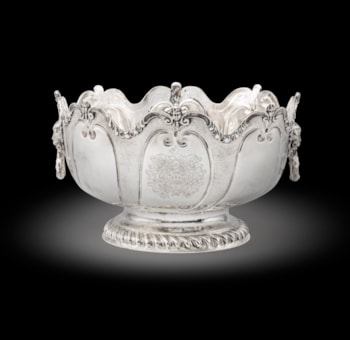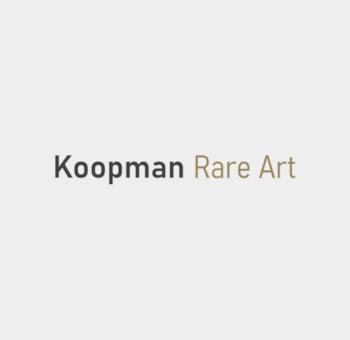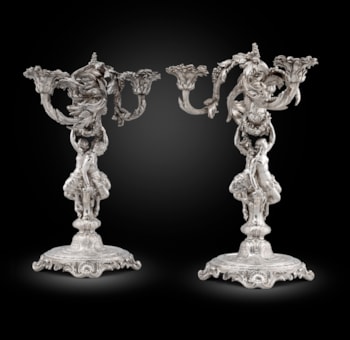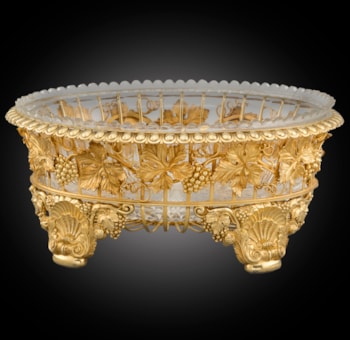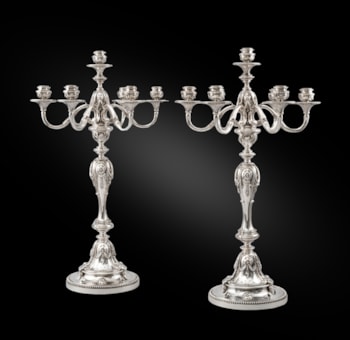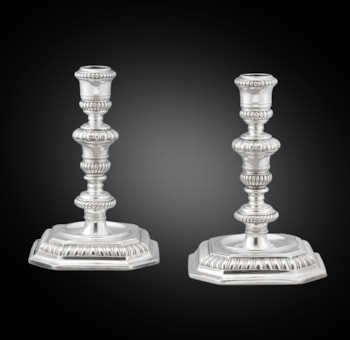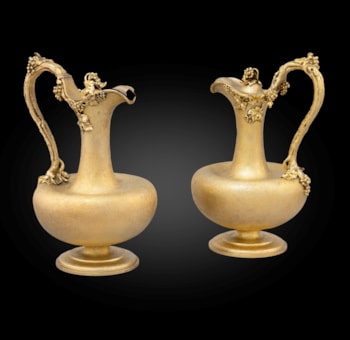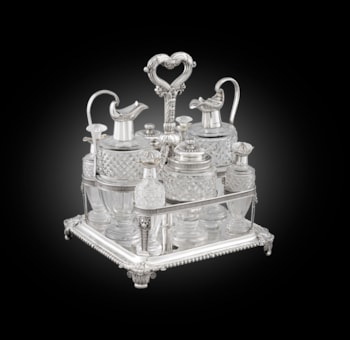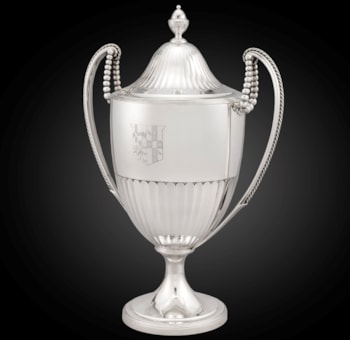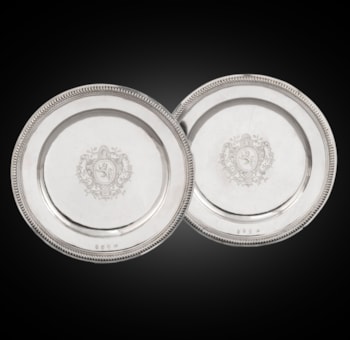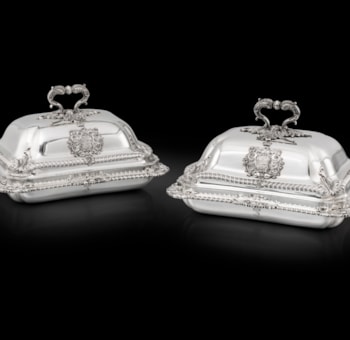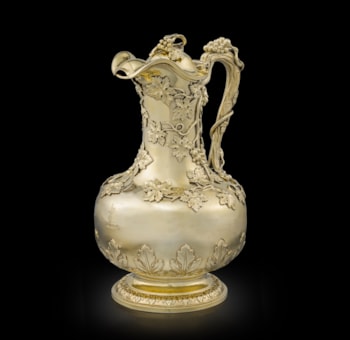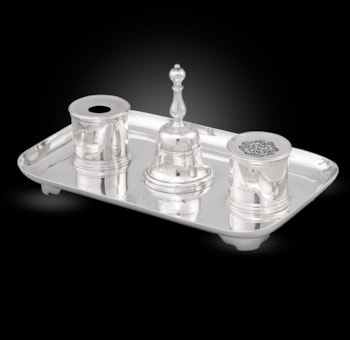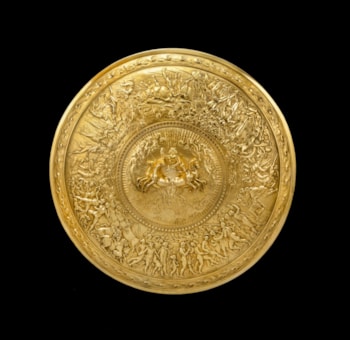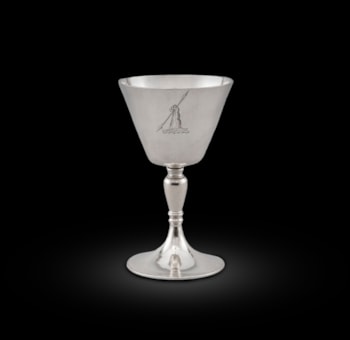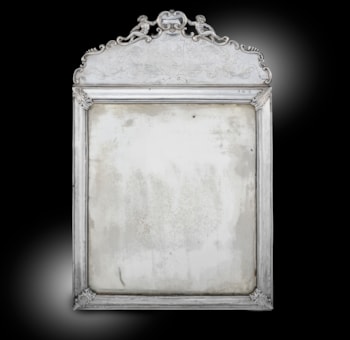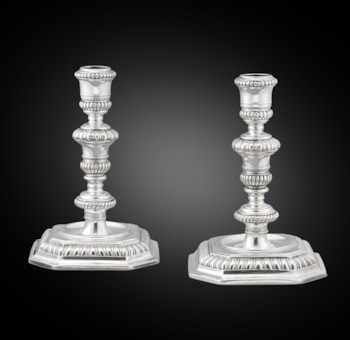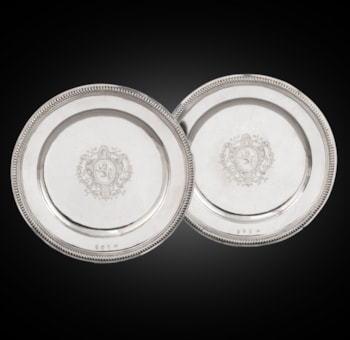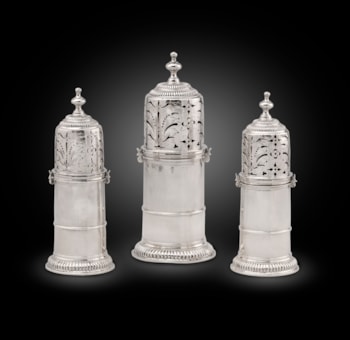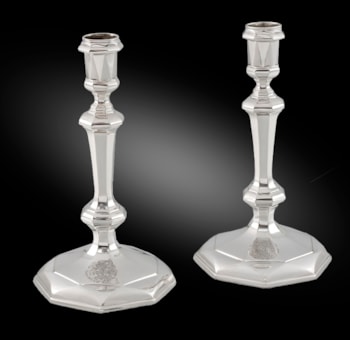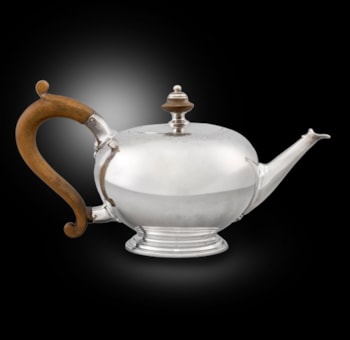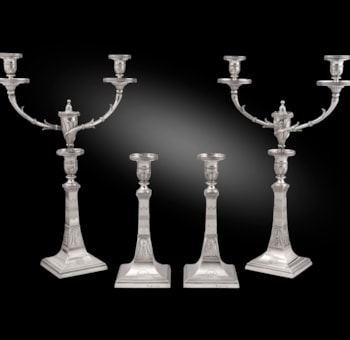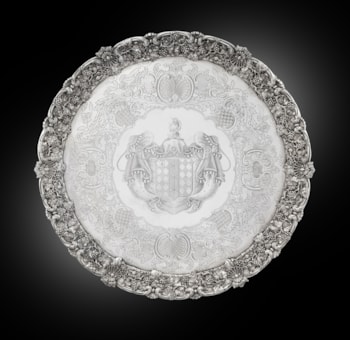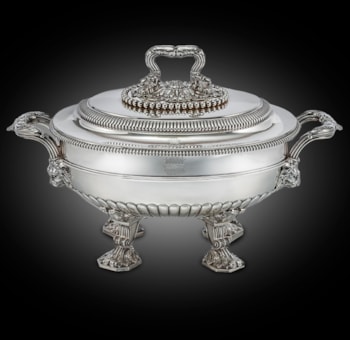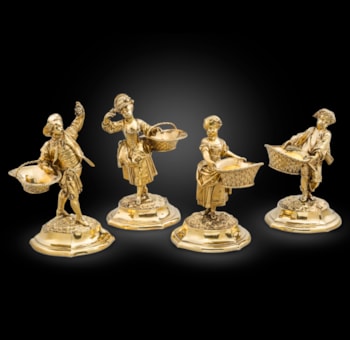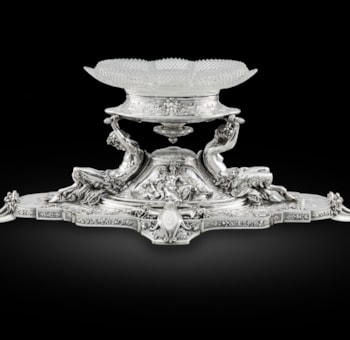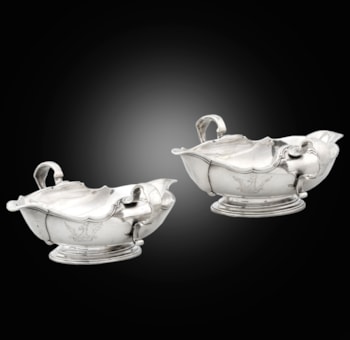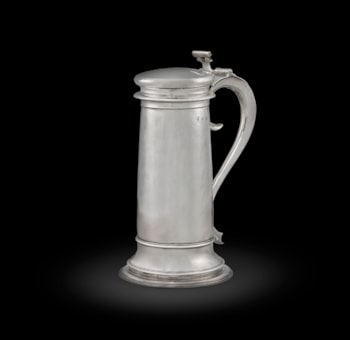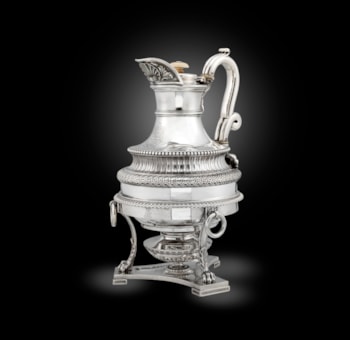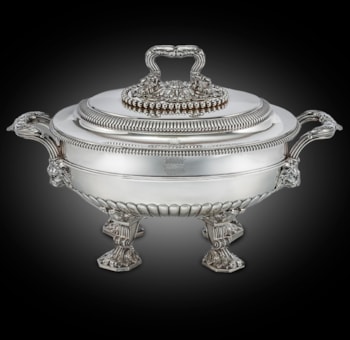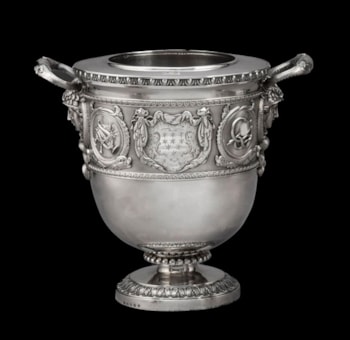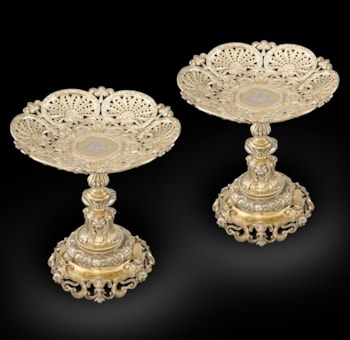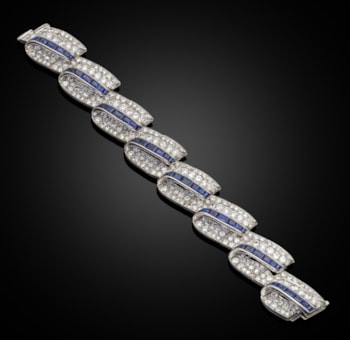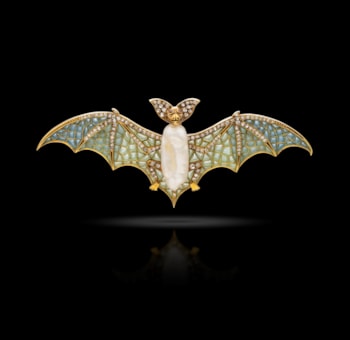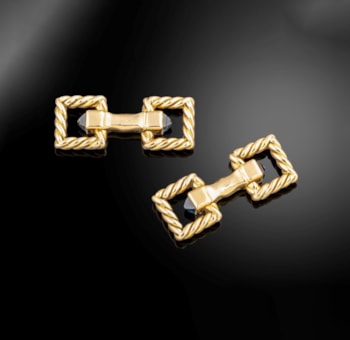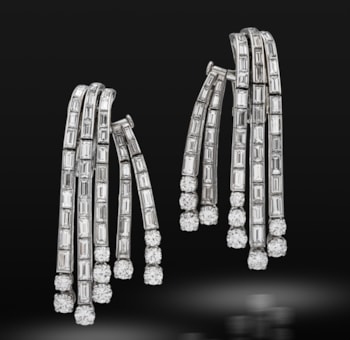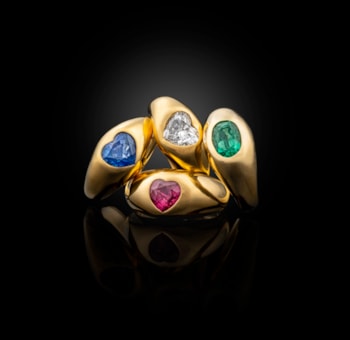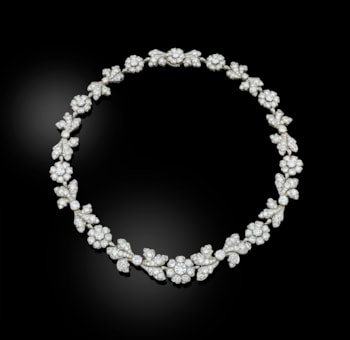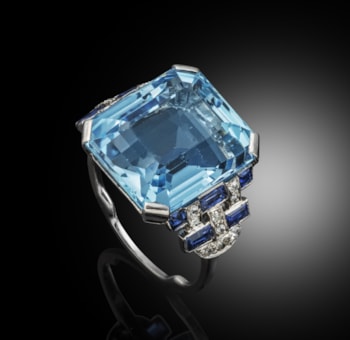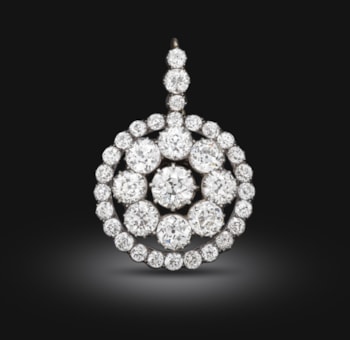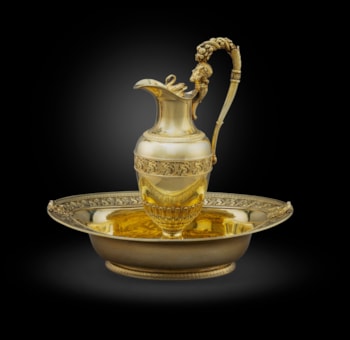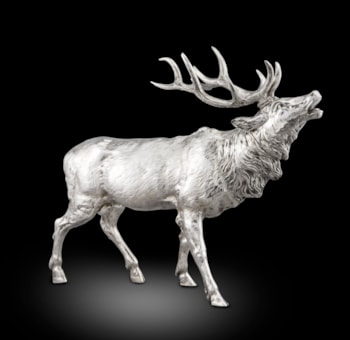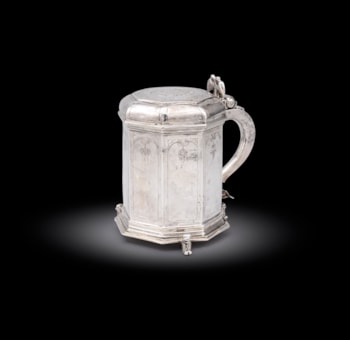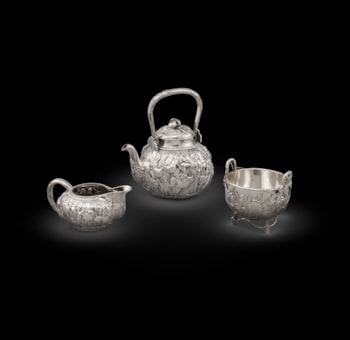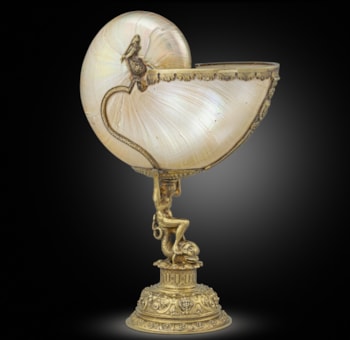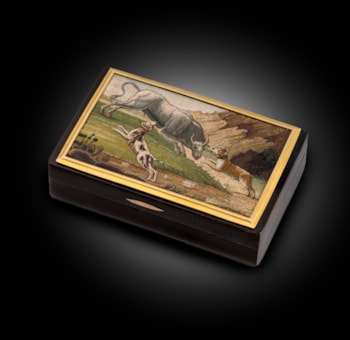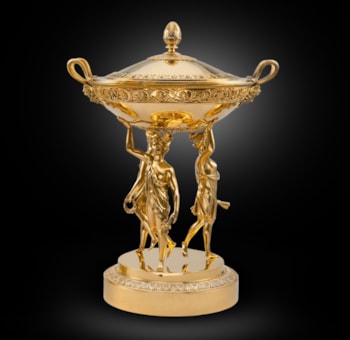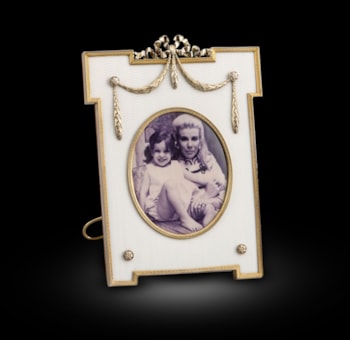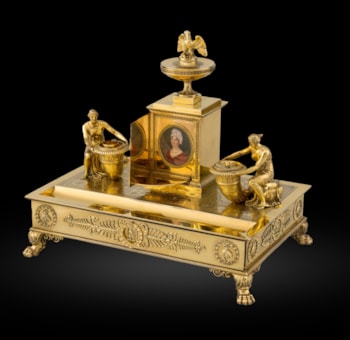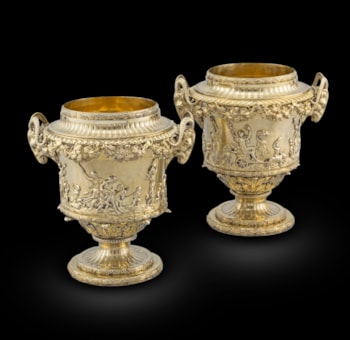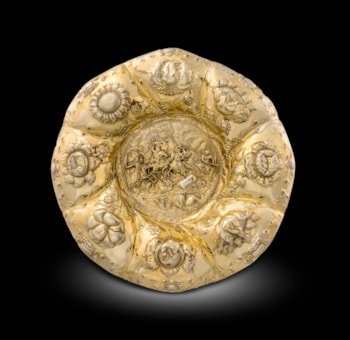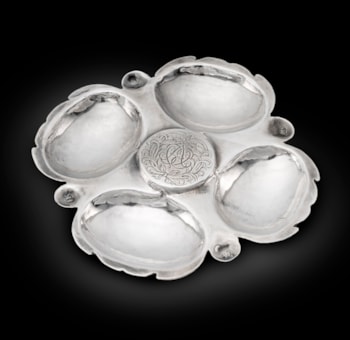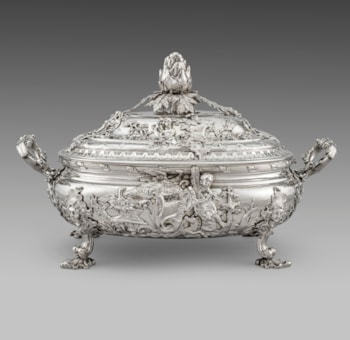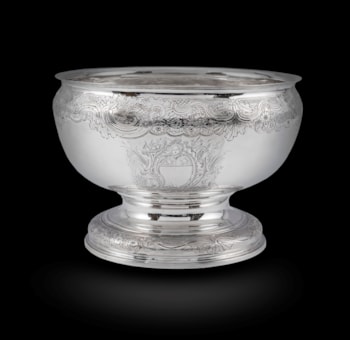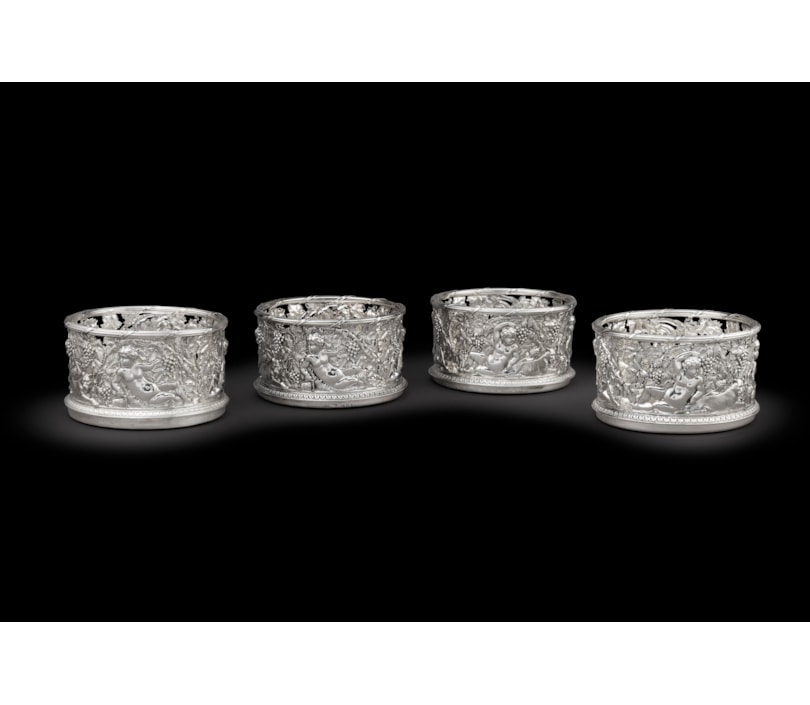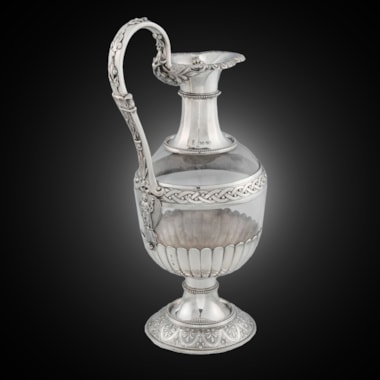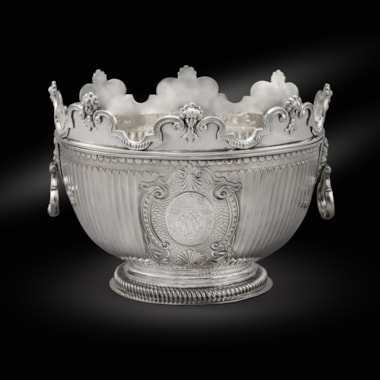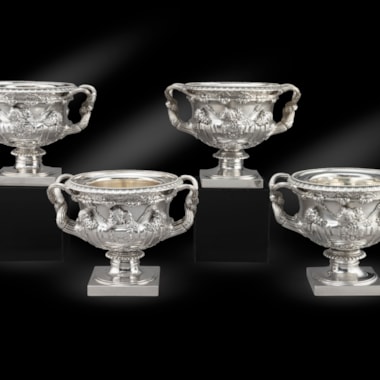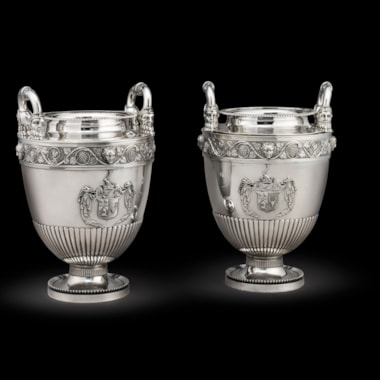The armorial bearings as engraved upon this Pair of George III English Sterling Silver Wine Coasters by Philip Rundell hallmarked London 1819 are those of the family of Ball-Hughes.
They may be blazoned as follows:
Arms:
Quarterly 1st and 4th Azure a lion rampant argent gorged with a mural crown (……?) a canton ermine (for Hughes) 2nd and 3rd (……?) a lion rampant (……?) surmounted by a cross square pierced or within the piercing an ermine spot sable thereon four lily flowers (……?) (for Ball) (1)
1. There is some ambiguity in respect of the blazoning of both the arms and crest as some elements are a little indistinct as well as the fact that the hatching that should indicate the tinctures of both the arms and the crests have been omitted. Although these arms and crests were exemplified within the records of The College of Arms in London in 1819 it appears they never seem to have been recorded in any printed source from which one can glean their exact blazons. In this regard, although I have blazoned the crown about the neck of the lion in the arms of Hughes as ‘a mural crown’ it could very well be a badly engraved ‘naval crown’?
2 Crests: (Dexter) Out of a naval crown or a dexter arm embowed proper charged with the symbol for infinity (……?) the hand holding a scimitar (proper?) (for Hughes) (Sinister) A demi-lion rampant ermine charged upon the shoulder with a cross couped (……?) holding between its paws a ball (……?) Motto: Forward Given their date of manufacture this pair of wine coasters were undoubtedly in the possession of Edward Hughes Ball Hughes (né Ball) of Upper Brook Street in the County of Middlesex and of Oatlands House2 near Weybridge in the County of Surrey (born 28th May 1798 died 10th March 1863). He was the son of David Ball, of Lambourne in the County of Essex and his wife, Sarah. It was David’s mother (and Edward’s grandmother) Ruth (born circa 1731 died 1800) who upon the death of her first husband married Admiral Sir Edward Hughes, KB,3 Royal Navy (born circa 1720 died 1794), of Hertingfordbury in the County of Hertfordshire, later of Luxborough in the County of Essex in 1755.4 The admiral during his service with the Royal Navy saw action at sea from the War of Jenkins’ Ear (1739 – 48), through the Seven Years’ War (1756 – 63) to naval actions in the East Indies during the time of the American War of Independence. It was at this time when Sir Edward served as the Commander-in-Chief of the East Indies Station, he was able to amass his fortune which subsequently for good or ill was bequeathed to his young grandson, Edward Hughes Ball, the owner of these wine coasters who at the time of his coming of age inherited two London town houses, estates in the County of Essex - the equivalent of some £70,000,000 today. History will remember Edward as a gentleman of vast fortune who was known affectionally amongst his contemporaries as ‘The Golden Ball’ in essence he was a dandy or a rake who had been educated at both Eton and Trinity College, Cambridge as well as serving as an officer in the 7th Hussars which he left to enjoy his fortune that allowed him to commit himself to an extravagant lifestyle which eventually would prove his undoing. In consequence of the admiral’s benefaction and in recognition of same, Edward assumed the surname of Hughes by Royal Licence and was further granted by the Kings of Arms at The College of Arms in London, the arms of Hughes quartered with those of Ball duly differenced on the 18th June 1819.5 2 The estate of the former Royal palace known as Oatlands Palace built by King Henry VIII. The estate at the time of Edward’s purchase in 1824 from HRH The Duke of York extended to some 3,233 acres at a cost of £145,000 (in today’s money a value of around £17,500,000). 3 Appointed as a Knight of the Most Honourable Order of Bath on the 9th December 1778. 4 Here it is interesting to note that when Edward and Ruth married it appears that she went by the name of Mary rather than that of Ruth. They were married at the Parish Church of St Mary, Rotherhithe, Co. Surrey on the 17th March 1755. She signed the register with her mark. 5 The College of Arms Grant Books – [1919] Volume XXXI, folio 239. Here it should be noted that the admiral’s original grant of arms was granted in 1778 – The College of Arms Grant Books – [1778] Volume XIV, folio 50. He was also granted supporters to his arms separately at the same time – The College of Arms Grant Books – [1778] Volume XIV, folio 53. 3 Edward married Maria Mercandotti at Banff in the County of Banffshire on the 23rd March 1823. Although their marriage lasted for many years they eventually separated and were divorced 1839. Between gambling and his increasingly hedonistic lifestyle Edward saw his fortune dissipate rapidly and so to evade his creditors he left for France in 1829 leaving his affairs in the hands of his lawyers to manage his remaining assets. He never returned to England. Although it is believed that he never remarried, he did have several relationships which produced issue all presumed to be illegitimate. Sadly, he died in exile at St. Germains in France, aged only 64.
Son of Thomas Rundell doctor of Widcombe Bath, born 1743. Apprenticed to William Rodgers jeweller of Bath on payment of £20. Arrived in London, 1767 or 1769, as a shopman to Theed and Pickett, Ludgate Hill, at a salary of £20 p.a.. Made partner with Picket in 1772 and acquired sole ownership of the business in 1785-6. Took John Bridge into partnership in 1788 and his nephew Edmund Walter Rundell by 1803, the firm being styled Rundell Bridge and Rundell from 1805. Appointed Goldsmith and Jeweller to the King in 1797, due it is said, to George III's acquaintanceship with John Bridge's relative, a farmer near Weymouth. He took Paul Storr into working partnership in 1807, an arrangement that lasted until 1819, when the latter gained independence. Only then was Rundell's mark entered as plateworker, 4th March, 1819. Address: 76 Dean Street, Soho, (the workshop). In 1823 John Bridge enters his first mark and it seems probable therefore that it was about this time that Rundell retired. He did not die however until 1827, leaving his fortune of 1.25 million to his nephew Joseph Neeld.
You May Also Like




